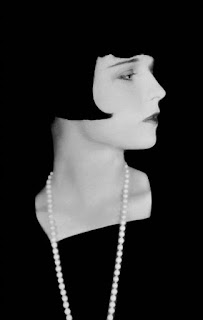The "Roaring Twenties", also called the "Jazz Age" conjure up images of "flappers" dancing the Charleston with bootleggers on Jazz music in a smoky speakeasy.
But in so boisterous an atmosphere when Paris was a feast and diamonds as big as the Ritz, beware of the hangover!
In When Harlem was in vogue, discover that tremendous optimism filled the streets of Harlem during the decade and a half following World War I. Langston Hughes, Eubie Blake, Marcus Garvey, Zora Neale Hurston, Paul Robeson, and countless others began their careers; Afro-America made its first appearance on Broadway; musicians found new audiences in the chic who sought out the exotic in Harlem's whites-only nightclubs; riotous rent parties kept economic realities at bay; and A'Lelia Walker and Carl Van Vechten outdid each other with glittering "integrated" soirees.
When Harlem Was in Vogue recaptures the excitement of those times, displaying the intoxicating hope that black Americans could create important art and compel the nation to recognize their equality. In this critically-acclaimed study of race assimilation, David Levering Lewis focuses on the creation and manipulation of an arts and belles-lettres culture by a tiny Afro-American elite, striving to enhance "race relations" in America, and ultimately, the upward mobility of the Afro-American masses.
He demonstrates how black intellectuals developed a systematic program to bring artists to Harlem, conducting nation-wide searches for black talent and urging WASP and Jewish philanthropists (termed "Negrotarians" by Zora Neale Hurston) to help support writers. This extensively-researched, fascinating volume reveals the major significance of the Renaissance as a movement which sprang up in Harlem but lent its mood to the entire era, and as a culturally-vital period whose after-effects continue to add immeasurably to the richness and character of American life.
 |
| Artistic depiction of the famous night club Cotton Club. |
Samuel 'Sam' Dodsworth is an ambitious and innovative automobile designer, who builds his fortunes in Zenith, Winnemac. At the age of fifty and facing retirement as a result of his selling of his successful automobile company to a far larger competitor, he sets out to do what he had always wanted to experience: a leisurely trip to Europe with his wife.
His forty-one-year-old wife, however, motivated by her own vanity and fear of lost youth, is dissatisfied with married life and small town Zenith, wants to live in Europe permanently as an expatriate, not just visit for a few months to allow Dodsworth to visit some manufacturing plants looking for his next challenge.
As Lewis ponders the material satisfaction made possible in the twenties, he depicts ( alittle bit like Henry James) the differences between the American and Euopean (especially British) cultures.
 |
| Did you know that in the interwar period, the basement of Gambetta square was thought to house a car park as back then, the car was the ultimate mean of transportation. Unbeliveable today, isn't it? |
Eponymous Bernice bobs her hair concerns a wealthy girl from Eau Claire, Wisconsin, who goes to visit her cousin Marjorie for the month of August. Marjorie feels that Bernice is a drag on her social life, and none of the boys want to dance with her.
Bernice, ashamed of her social awkwardness, decides to show to everybody she is fashionable and exiting. The best way is to have the brand new hairdo: the "bobed" hair.
But will she dare to have it cut and in any case, how the other youngsters will react to her newly acquired audace?
 |
| Louise brook, the epitomy of the bobed-haired flapper French people would call "garçonne". |
Set on the prosperous Long Island of 1922, The Great Gatsby provides a critical social history of America during the Roaring Twenties within its narrative. That era, known for unprecedented economic prosperity, the evolution of jazz music, flapper culture, and bootlegging and other criminal activity, is plausibly depicted in Fitzgerald's novel.
Fitzgerald uses these societal developments of the 1920s to build Gatsby's stories from simple details like automobiles to broader themes like Fitzgerald's discreet allusions to the organized crime culture which was the source of Gatsby's fortune.
Fitzgerald educates his readers about the garish society of the Roaring Twenties by placing a timeless, relatable plotline within the historical context of the era.
Is the 1970's version with R. Reford and M. Farrow and cloths by R. Lauren better than Luhrmann's version with L. Dicaprio and Carey Mulligan?
Read the book, watch both films and so indulge yourself in 1920's frenziness.


